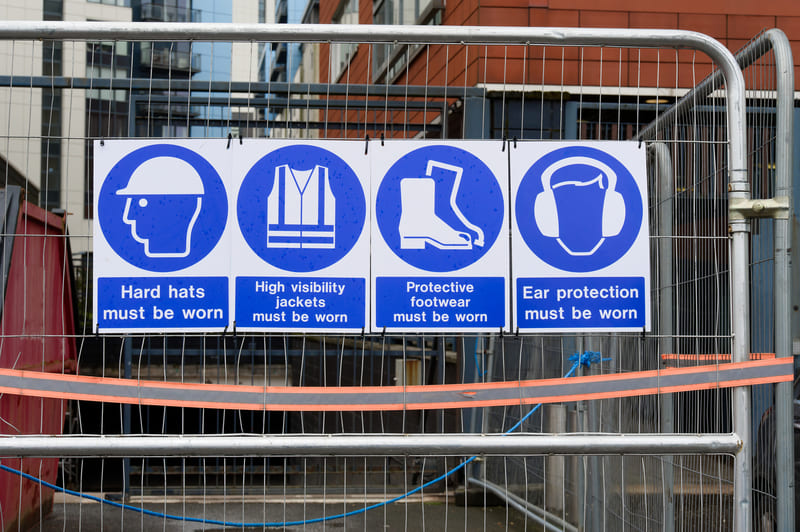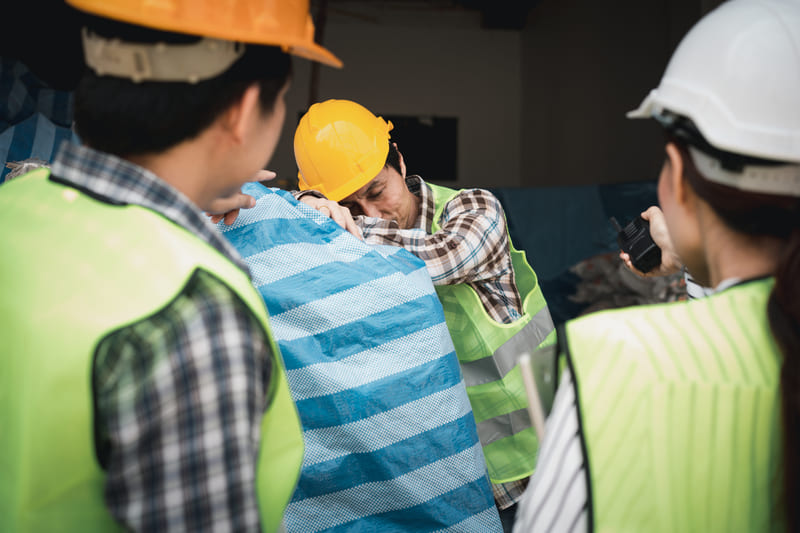Blog Post
First Aid Training: Training For Construction Sites

Among the many workplaces that require first aid training, construction sites are particularly high on the list of hazardous workplace environments. Given the major movement of labourers, materials and heavy machinery and equipment, this space requires reliable disaster plans and crisis management protocols in order to mitigate harm should anything go wrong throughout a routine operation or otherwise.
Although broader crisis management is integrated into the site surveys and project management plans, there is also a need for trained personnel to be able to attend to individuals directly. When an accident happens on a construction site, it will not only call for logistical and project-based response to ensure the structural safety of the site and the minimisation of the damage, but also a keen response to employee needs or injuries.
This is why it is vital that at least a handful of employees have first aid training and are prepared to tend to any wound, burn, or other victims.
Why Do Construction Sites Require Employees With First Aid Training?
Construction sites are a mass assortment of moving parts, with workers being consistently exposed to dangerous elements, materials and scenarios. When constructing buildings, labourers can expect to scale tall scaffoldings that expose them to falls. They will also be working around heavy-duty equipment and machinery that can malfunction or be misused, resulting in injury or explosion.
Chemicals and materials also create a source of stress, as there are often flammable items on-site that can be mishandled or stored incorrectly. Besides these entry-level issues, there is also the danger of workers being over-exploited, which may result in physical injuries. For example, builders are often expected to work long hours in extreme weather conditions, transporting brick and mortar, placing major strain on their bodies.
If companies are not adequately encouraging healthy workplace practices like regular breaks, physical rest and leave for injured staff members, then workers may become burnt out. When employees are unwell, they will not perform adequately, any may become more prone to making vital mistakes that could not only put themselves at risk but also put the broader construction team into threatening situations.

First Aid Training Is Just One Aspect Of Regulatory Health And Safety
Emergency preparedness is a non-negotiable on a construction site, as this is one of the more complex work environments given the nature of builds and the often physically-demanding work of labourers. In most countries, workplaces will be encouraged to maintain health and safety protocols but there will also be legal requirements in place to ensure that this is done.
For example, occupational health and safety regulations require employers to minimise liability by introducing certain protective standards. For example, act no. 85 of 1993 strictly enforces that employers must facilitate a safe workplace by identifying and managing hazards, appointing safety representatives, training and supervising employees to ensure best practices, and actively personal protective equipment (PPE). Similarly, employees have a similar duty to embrace these rules and regulations, participating in the standards and measures that are put in place for their own safety.
Should any of these rules be violated, employers and site managers can face major penalties and disruptions in their projects, making it difficult to complete tasks on time and deliver to clients or funders. Beyond this, there is also the threat of workplaces being shut down or people being arrested for unlawful practice. Such regulation demonstrates the importance of following safety measures, and these harsh punishments are an indication of the severity of threats in the workplace. Naturally, mistakes and accidents that result in injury or even death can and should be avoided through the simple routine management of machinery, facilities and hazards.
First aid training is just one small counterpart of this overarching commitment to safety and risk management - but that does not mean that it is unimportant. When accidents do eventually happen, health and safety representatives or medical responders will rely on the skills they learned through their first aid training to address burns, wounds, lacerations, concussions, broken bones or whatever else comes their way.
Without adequate first aid training being administered to victims of emergencies; people may be in danger of potentially life-altering circumstances. Similarly, companies may become embroiled in legal disputes with the relevant authorities and likely the Department of Labour, thereby turning a bad situation ugly. To avoid the stress of incident reporting and major emergency responses, construction site managers and surveyors should encourage their staff to undergo first aid training as a preventative measure.
Beyond that, resourcing and authority should be given to health and safety representatives so that they can prevent such issues from happening in the first place. Ideally, these individuals would be able to do basic risk assessments that can lead to mitigation measures in dangerous areas of work that involve, for example, the handling of chemical materials, the use of heavy-duty machinery that results in noise pollution and disruptive vibration or scaling high heights of scaffoldings or buildings.

The Benefits Of First Aid For Healthy And Safety Representatives
Beyond prevention, health and safety officials with first aid training are also important because they can provide an educated and informed analysis of the situation. When accidents happen, companies will be forced by law to report the accident to authorities and implement control measures to avoid the situation repeating. Accident investigations can be time-consuming and expensive, not to mention difficult if you lack the expertise to identify risks and hazards.
However, with the right personnel on your staff, companies will be able to make good use of their knowledge pertaining to emergency response and prevention, making it easier for them to quickly and effectively determine the source of the mistake. What�s more, they will find safety and security knowing that a well-trained representative is there to facilitate care for valued employees.
Minimise Risk On Your Construction Site Today
If you are an employee or employer who regularly works in high-risk sites where your wellbeing is threatened by injury, exhaustion or accidents, then it would be wise to invest time and financing into a first aid training course. This course will allow you to take better care of yourself and those around you. It will also teach you how to identify major health issues and prevent injury from escalating in an accident. With this training, you can rest easy knowing that should anything go wrong, you will be able to help yourself and others.
So, if you want to learn more, why not visit our website today and join one of the many courses we have available.
GET IN TOUCH
There are a few ways to reach us below. Please feel free to contact us via phone, email or you can send us a message via the form provided and we will get back to you.




















